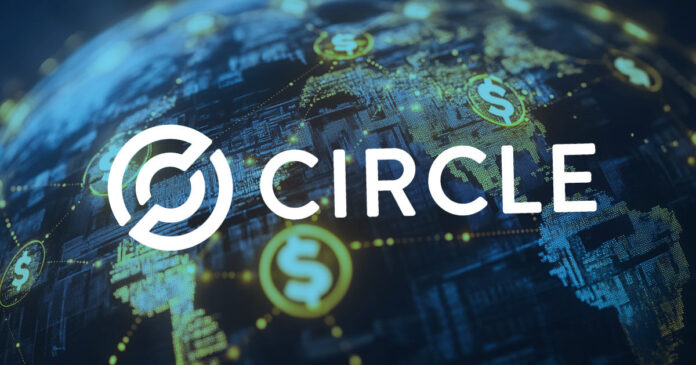
Circle has launched Compliance Engine, a tool designed to help businesses meet regulatory requirements through customizable, automated compliance checks. The feature is integrated within Circle’s infrastructure, eliminating the need for separate third-party solutions and streamlining the compliance process for companies operating in the digital asset space.
As businesses navigate the complexities of evolving regulations, Compliance Engine offers functionalities such as real-time transaction screening, periodic transaction monitoring, and adherence to the Travel Rule for secure transmission of personal information between virtual asset service providers. These capabilities allow companies to define risk levels, automate enforcement actions, and develop preventative blocklists tailored to their needs.
Circle’s approach to regulatory compliance support
Per Circle’s announcement, the Compliance Engine is part of the company’s ongoing commitment to regulatory compliance. Circle posits it has built a foundation of trust and transparency, which has been instrumental in its ability to adapt to changing regulations. This dedication is illustrated by Circle becoming the first stablecoin issuer to achieve compliance with the European Union’s Markets in Crypto-Assets regulatory framework.
The Compliance Engine aims to remove hurdles that have historically made it difficult for businesses to engage with blockchain technologies. By providing tools that simplify the process of meeting regulatory obligations, Circle enables companies to confidently build on-chain services without the lengthy preparation traditionally required to ensure compliance. This approach addresses a significant challenge in the industry, where regulatory uncertainty has often been a barrier to entry for new market participants.
Circle’s USDC and EURC have already positioned the company as advocates for adherence to current regulatory frameworks. The Compliance Engine further solidifies this stance by offering businesses a way to integrate compliance measures directly into their operations. As companies can tailor each function to their requirements, the tool adapts on a case-by-case basis, putting control entirely in the hands of the users.
By proactively addressing compliance challenges, Circle aims to strengthen its market position and set a precedent for other companies in the digital asset space. This move is particularly significant given the increasing scrutiny from regulators worldwide and the growing importance of compliance in maintaining market integrity.
The battle between TradFi and DeFi between stablecoin giants
While Circle initially aimed to create a financial revolution, some argue it has evolved to become more aligned with traditional financial structures and regulations. This positioning could make Circle a potential partner or complement a world filled with CBDCs rather than a direct competitor to centralized monetary control.
The CEO of rival Tether, Paolo Ardoino, has stated that while Tether cooperates directly with law enforcement agencies, other stablecoins claiming to be “more compliant” require a judge’s order, potentially allowing bad actors more time to move funds. In the past year, Tether has voluntarily honored 198 requests from law enforcement to freeze wallets, 90 of which originated from the US.
Tether’s approach to European regulations (MiCA) further illustrates its stance. Ardoino previously expressed reluctance to comply fully, stating, “MiCA requires us to place 60% of our cash reserves with several banking institutions. This could compromise our redemption system.” He added, “We are in favor of regulation, but not at any price.”
The company’s own framework aims to build “an unstoppable, future-proof world” focused on “dismantling traditional systems for fairness.” Ardoino emphasized using technology to empower individuals, communities, cities, and nations to become self-sustainable, independent, and free.
This positioning contrasts with competitors like Circle, which appear more aligned with traditional financial structures and regulations.
Mentioned in this article
Credit: Source link






















 Bitcoin
Bitcoin  Ethereum
Ethereum  XRP
XRP  Tether
Tether  Solana
Solana  USDC
USDC  Dogecoin
Dogecoin  Cardano
Cardano  Lido Staked Ether
Lido Staked Ether  TRON
TRON  Wrapped Bitcoin
Wrapped Bitcoin  Chainlink
Chainlink  Wrapped stETH
Wrapped stETH  Avalanche
Avalanche  Sui
Sui  Stellar
Stellar  Litecoin
Litecoin  Toncoin
Toncoin  Shiba Inu
Shiba Inu  Hedera
Hedera  LEO Token
LEO Token  USDS
USDS  Hyperliquid
Hyperliquid  Polkadot
Polkadot  WETH
WETH  MANTRA
MANTRA  Bitcoin Cash
Bitcoin Cash  Ethena USDe
Ethena USDe  Bitget Token
Bitget Token  Wrapped eETH
Wrapped eETH  Uniswap
Uniswap  Monero
Monero  NEAR Protocol
NEAR Protocol  Pepe
Pepe  WhiteBIT Coin
WhiteBIT Coin  Bittensor
Bittensor  Ondo
Ondo  Aave
Aave  Aptos
Aptos  Internet Computer
Internet Computer  Dai
Dai  Official Trump
Official Trump  Mantle
Mantle  Ethereum Classic
Ethereum Classic  OKB
OKB  Tokenize Xchange
Tokenize Xchange  Gate
Gate  sUSDS
sUSDS  Sonic (prev. FTM)
Sonic (prev. FTM) 
